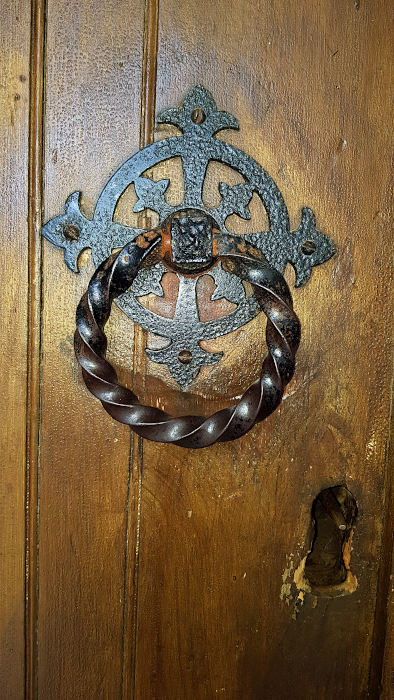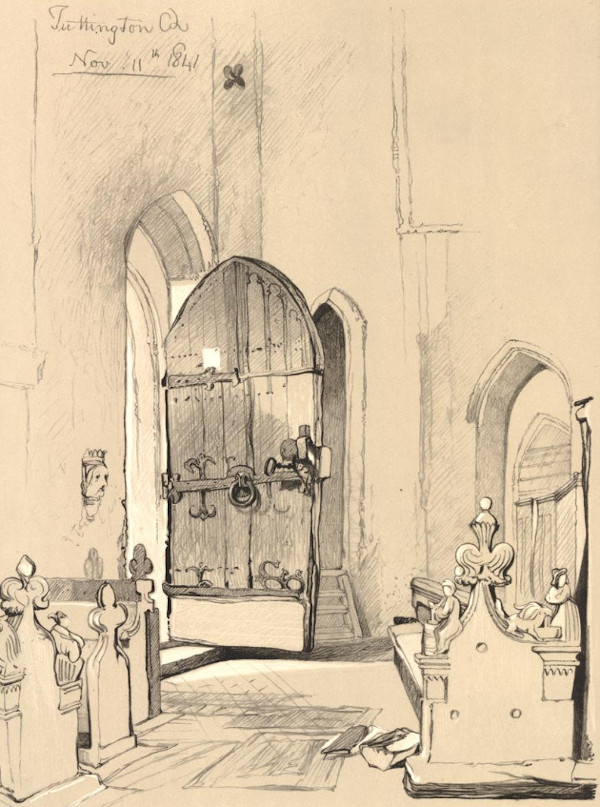…was the cry of the Hunchback of Notre Dame as he snatched the beautiful gipsy girl Esmeralda, accused of witchcraft, from the jaws of the gallows and carried her to the safety of the cathedral.
We can all appreciate the benefits of a sanctuary as we stay in our homes (mostly) as a place of safety to ward off the ravages of an angry virus. But Tuttington church was an ecclesiastical sanctuary from pursuit of the more ancient kind, and there is evidence of it visible to this day.
The idea of asylum or sanctuary as a refuge for the oppressed is probably as old as human history and in some forms it continues today. During British history, sanctuary associated with religious buildings became recognised in pre-Saxon times and the Saxon King Aethelberht first made laws regulating it.
In medieval England, sanctuary could be claimed by fleeing fugitives at a cathedral or church. In extreme cases, it is said they could shoot arrows from within the church to defend themselves.
But, there were limits to sanctuary which only lasted for 40 days. This period enabled the pursued to negotiate terms with their pursuers. Freedom could be granted by royal pardon but the more likely outcome was lifelong exile from the country. Given that capital punishment was meted out for crimes we might consider relatively trivial today, the alternative of exile to execution might seem more appealing. However, sanctuary was finally abolished in England in 1623.

In order to claim sanctuary, a fugitive had to touch the sanctuary ring (knocker or handle) on the door of a church. Tuttington church still has its sanctuary ring as part of the handle to the main door in the south porch.
It seems that the sanctuary ring of Tuttington church has been moved since the middle of the 19th century when the artist Miles Edmund Cotman drew the inside of Tuttington Church on the 11th November 1841. According to a document produced by local historian Richard Harbord, who gave a fascinating talk on Tuttington history in 2019, the sanctuary ring was formerly located in the centre of the door. Is that the door key visible in the drawing still in use today?

Image, © The Trustees of the British Museum (https://www.britishmuseum.org/collection/object/P_1863-0418-198). Attribution-NonCommercial-ShareAlike 4.0 International (CC BY-NC-SA 4.0). Creative commons license. (https://creativecommons.org/licenses/by-nc-sa/4.0/)
Sanctuary in its old incarnation might now have disappeared but the human need for hunkering down in a place of safety will remain with us.